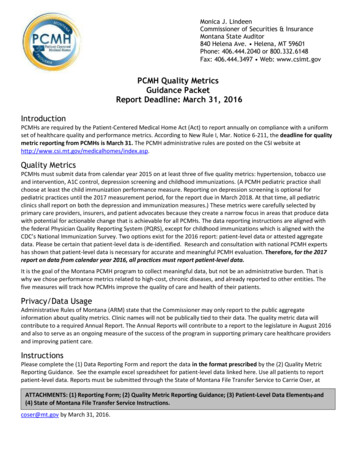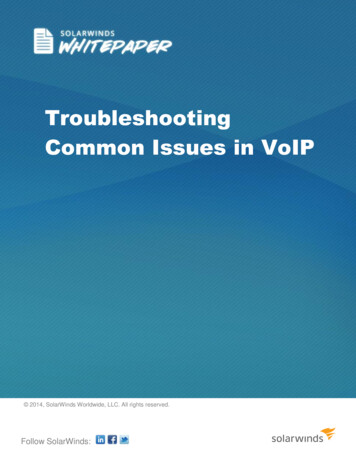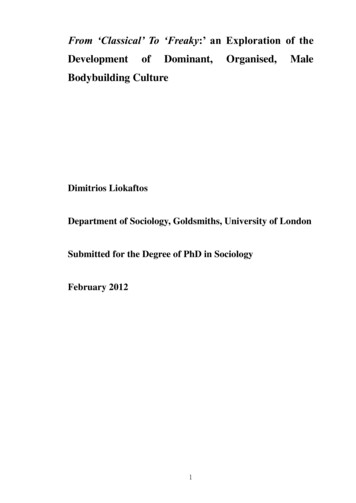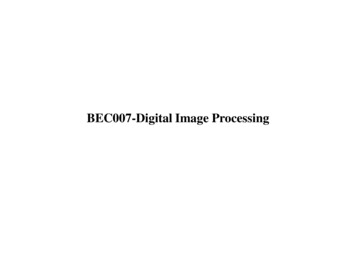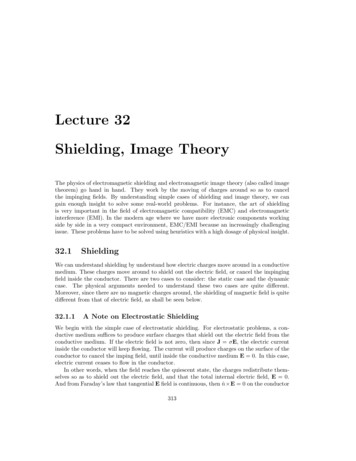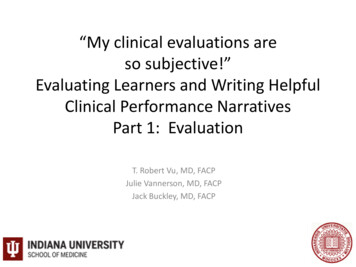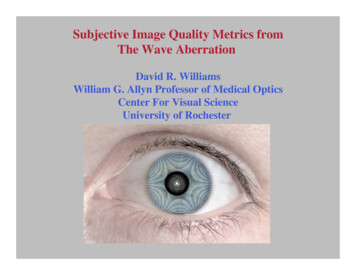
Transcription
Subjective Image Quality Metrics fromThe Wave AberrationDavid R. WilliamsWilliam G. Allyn Professor of Medical OpticsCenter For Visual ScienceUniversity of Rochester
Commercial Relationship:Bausch and LombFunding:Bausch and LombNSF Science and TechnologyCenter for Adaptive Optics
Collaborators:Univ of Rochester:Li ChenNathan DobleHeidi HoferScott MacRaeJason PorterBen SingerRemy TumbarIan Cox, Bausch and LombRay Applegate, University of HoustonLarry Thibos, Indiana University
How Bad Is This Wave Aberration?
Goal:To compute a number that capturesthe subjective effect of the eye’swave aberration.Uses:Assessing severity of the wave aberrationCalculating the best correction
How Bad Is This Wave Aberration?RMS Wavefront Error 0.87 µm
Some Aberrations InteractStrongly in Image BlurDefocusrms 0.5 µmSphericalAberrationrms 0.16 µmDefocus andSpherical Aberrationrms 0.52 µm
Zernike ModesradialorderLower igmatismHigher secondarycomaZ35secondarytrefoilZ55pentafoil
Zernike ModesradialorderLower igmatismHigher secondarycomaZ35secondarytrefoilZ55pentafoil
Zernike ModesradialorderLower igmatismHigher secondarycomaZ35secondarytrefoilZ55pentafoil
Zernike ModesradialorderLower igmatismHigher secondarycomaZ35secondarytrefoilZ55pentafoil
There are strong interactionsbetween Zernike Modes.Therefore,Decomposing the wave aberrationinto Zernike modes is not the best way toevaluate the subjective impact ofthe wave aberration
How Bad is This Wave Aberration?Wave AberrationPoint Spread FunctionUse Retinal Image Quality, Not the Wave Aberration
Principle of Adaptive OpticsAberrations in Lens and CorneaDistort Wave frontDeformable MirrorCorrects Wave frontSharp Imagein CameraWave front SensorMeasures Wave front
Adaptive Optics Sharpensthe Eye’s Point Spread Function
Adaptive Optics Can Create Wave Aberrations(Subject: ND )Wave AberrationAfter AO correctionConvoluted retinal imageWith coma added
Wave aberrations from Lasik postOp patientWave aberrations created by adaptive optics(With real eye, JP)
Blur MatchingBinary Noise Stimulus Lots of Sharp Edges Edges At All Orientations Seen Through AdaptiveOptics550 nm, 1 deg, 6 mm pupil
Blur Matching of Patient Wave AberrationsThe subject adjusted the amplitude of defocus so that thesubjective blur matched that of the patient wave aberration.Patient wave aberration0.30.20.20.103456789 10 11 12 13 14 15 16 17 18 19 20-0.1-0.2Defocus(D)Amplitude(µm)0.30.103456789 10 11 12 13 14 15 16 17 18 19 20-0.1-0.2-0.3-0.4DefocusStimulusZernike mode-0.3Zernike mode
Blur Matching Controls forNeural Differences betweenPatientsUsing Multiple SubjectsControls for Neural Adaptation
Acuity does not always capture thesubjective quality of visionEqual Acuity But Different Subjective Image Quality
Compare Subject Matches with MatchesMade Using Three Different MetricsWavefront RMSStrehl RatioNeural Sharpness
Wave Aberration RMSBig RMSSmall RMSAmplitude (µm)3Big RMS21Small RMS0-1-3-2-10Aperture(mm)123
RMS MetricMetric matches (D)1.21R2 0.46270.80.60.40.2000.20.40.60.81Subject Matches (D)1.2
Strehl Ratio of Point Spread FunctionDiffraction-limited PSF(Perfect Eye)HdlStrehl Ratio H eyeH dlActual PSF(Aberrated Eye)HeyeC. of Austin Roorda
Strehl Ratio Metric1.2Metric matches (D)12R 0.49020.80.60.40.2000.20.40.60.8Subject Matches (D)11.2
A Simple, Biologically-Plausible Metricfor Subjective Image QualityΣ(xPoint SpreadFunction)Gaussian Neural Blurσ 0.8’ SubjectiveImageQuality
Neural Sharpness Metric1.2Metric matches (D)12R 0.70340.80.60.40.2000.20.40.60.8Experiment (D)11.2
Wavefront RMSNeural Sharpness1.21R2 0.46270.80.60.40.2000.20.41Metric matches (D)Metric Matches (D)1.20.60.8R2 0.70340.80.60.40.211.2000.2Subject Matches (D)0.40.60.811.2
Collaboration to Identify the Optimum Image Quality MetricRay Applegate, University of Houston:Effectiveness of Image Quality Metrics in PredictingVisual Acuity with Convolution SimulationsDavid Williams, University of RochesterEffectiveness of Image Metrics in predictingSubjective Image Quality with Adaptive OpticsLarry Thibos, Indiana University:Effectiveness of Image Quality Metricsin Predicting Visual Acuity in the Population
Optimizing refraction with animage quality metricmaximumerrormetric valuesearch in3-D spacedefocussubjectiveGuirao and Williams (2003)
Conclusions Generating blur with adaptive optics leadsto a robust metric for correcting vision. It is hard to estimate subjectiveblur from the wave aberration.Zernike Decomposition doesn’t helpmuch. The point spread functioncombined with a biologicallyplausible model of neural bluris better. Standards for optimizing correction from wavefrontare in the works
Scott MacRae Jason Porter Ben Singer Remy Tumbar. How Bad Is This Wave Aberration? Goal: To compute a number that captures the subjective effect of the eye’s wave aberration. . Wave aberrations from Lasik postOp patient Wave aberrations created by adaptive optics (With real eye, JP)


